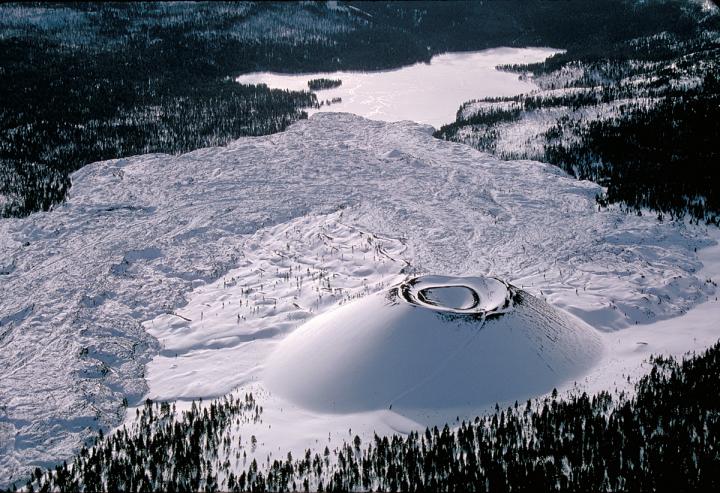A new analysis of water and other elements contained in olivine-rich basalt samples gathered from cinder cone volcanoes that surround Lassen Peak in Northern California, at the southern edge of the Cascade chain, shows water is key for how magma forms deep underground and produces explosive volcanoes in the Cascade Range.
The discovery helps solve a puzzle about plate tectonics and the Earth's deep water cycle beneath the Pacific Ring of Fire, which scientists began studying in the 1960s to understand the region's propensity for big earthquakes and explosive volcanoes. The ring stretches from New Zealand, along the eastern edge of Asia, north across the Aleutian Islands of Alaska and south along the coast of North and South America. It contains more than 75 percent of the planet's volcanoes.
To understand how water affects subduction of the oceanic plate, in which layers of different rock types sink into the mantle, the team studied hydrogen isotopes in water contained in tiny blobs of glass trapped in olivine crystals in basalt.

A snowy cinder cone on Mount Lassen in Northern California, where University of Oregon researchers collected samples for their study on magma formation. They determined that the water cycle plays a key role in explosive volcanoes in the Cascade Range. Photo by Marli Miller, University of Oregon
"Water is a key player," says Paul J. Wallace, a professor in the University of Oregon's Department of Geological Sciences and coauthor of a paper in the May issue of Nature Geoscience. "It's important not just for understanding how you make magma and volcanoes, but also because the big volcanoes that we have in the Cascades -- like Mount Lassen and Mount St. Helens -- tend to erupt explosively, in part because they have lots of water."
A five-member team, led by UO doctoral student Kristina J. Walowski, used equipment in Wallace's lab, CAMCOR, the Carnegie Institution in Washington, D.C., and a lab at Oregon State University. Next, the team fed data gained from the rocks into a complex computer model developed by co-author Ikudo Wada of the University of Minnesota.
That combination opened a window on how rising temperatures during subduction drive water out of different parts of the subducted oceanic crust, Walowski said. Water migrates upwards and causes the top of the subducted oceanic crust to melt, producing magma beneath the Cascade volcanoes.
The key part of the study, Wallace said, involved hydrogen isotopes. "Most of the hydrogen in water contains a single proton," he said. "But there's also a heavy isotope, deuterium, which has a neutron in addition to the proton. It is important to measure the ratio of the two isotopes. We use this ratio as a thermometer, or probe, to study what's happening deep inside the earth."
"Melting of the subducting oceanic crust and the mantle rock above it would not be possible without the addition of water," Walowski said. "Once the melts reach the surface, the water can directly affect the explosiveness of magma. However, evidence for this information is lost to the atmosphere during violent eruptions."






Comments